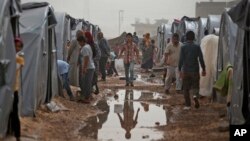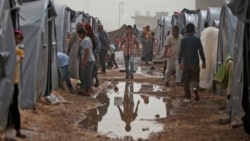Winter is on Syria’s doorstep. For millions of the country’s civilians, this means that an already difficult existence will become much, much worse. They must winterproof their shelters, or build new ones, but building materials are scarce. Most of the refugees need cold-weather clothing, extra blankets, and heating fuel, all of which are in short supply. And many worry about procuring medicines for their children’s common winter illnesses.
According to the United Nations Refugee Agency, of Syria’s population of 22 million, at least 6 and half million people are internally displaced, while about 3.2 million have fled to neighboring countries. And as fighting in Syria escalates, these numbers continue to grow.
“Syria used to be a middle class country where nearly every child was in school. In 2008 Syria’s people were hosting refugees from neighboring countries,” said Assistant Secretary of State for Population, Refugees, and Migration Anne C. Richard. “I never imagined that this land – so rich in history and antiquities, wheat and olive trees – could be so utterly broken.”
The Office of the United Nations High Commissioner for Refugees estimates that at least $6.5 billion is needed to meet these people’s needs through the rest of the year. The United States is heeding the call, as it has over the past three years. Just one month ago, Secretary of State John Kerry pledged nearly $500 million in new assistance for humanitarian relief to Syria, and for those countries that are hosting Syrian refugees. The majority of these funds will go to UN agencies.
And in late October, Assistant Secretary Richard announced that the U.S. will provide another $10 million to help address the needs of local communities hosting refugees from Syria. More than half of Syria’s refugees live outside of traditional refugee camps.
This brings the total U.S. humanitarian contribution to the Syrian crisis to more than $2.9 billion since the beginning of the conflict. It is the largest sum we have spent on any humanitarian response in a generation.
The United States is committed to providing relief for the millions of people affected by the worst humanitarian disaster of our era, and we hope that other nations will follow our lead.















